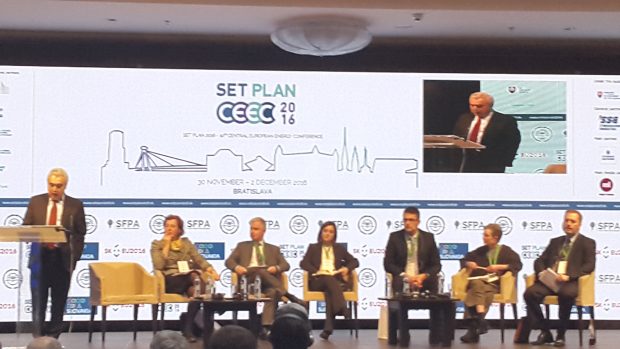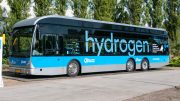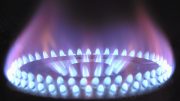
CEEC conference (Bratislava, Slovakia)
“We need a direction and Set-plan is all directions”. It ‘s time to act!. Things are crossing the borders. And it’s necessary the technical and political collaboration between governments . Each research area considered by the Set-Plan is linked to the others. The energy market driver is the consumer energy demand . The consumers control the demand and consumption at the local level but governments have to involve them in the decision-making process connecting the “prosumer” communities in order to stabilize the market.” This is the essence of the message launched during the CEEC conference.
From November 30 to December 2, 2016, the tenth edition of the Central European Energy Conference conference was held in Bratislava (Slovakia), during which several institutional political figures and scientific experts of the European Community presented and discussed the SET-Plan 2016 – Transforming the EU Energy System through INNOVATION. The meeting, focused on clean energy issues and the competition of low-carbon technologies, has represented a prestigious platform at EU level and internationally and stimulated discussions and insights on the most important aspects relating to energy policy and research and innovation in Europe.
The main topics discussed concerned: the key aspects of the new Set-Plan 2016 (particularly innovation in renewable sector and energy efficiency); the importance at strategic level of the information system SETIS – Strategic Energy Technologies Information System; the presentation of the World Energy Outlook 2016; the state of Energy Union since its launch in February 2015.
The Set-Plan fixed programmatic level strategies and the crucial points of the future direction of research in the energy sector. In particular in renewable energy and bio-energy, smart community, efficiency and energy saving, sustainable transport, CCUS and security in the nuclear sector. It was highlighted a crucial aspect: the need for greater investment in technology through the collaboration of the private sector and between the public and private sectors. It ‘s still difficult to realize the active participation of citizens in decision-making that involves governments. It could be essential for effective implementation of the transition the aggregation of the citizens ( “too many singles” now) into energy community in order to monitor and “measure” the actions defined in the various issues of the Set- Plan.
The “carbon neutral” energy scenario in 2030, in the second half of the century, shows the absolute supremacy of renewables and the energy efficient techniques and technologies,. Geothermal energy also will play a key role. In an optimistic scenario for 2050 it is expected that renewable energy should cover 60% of production (40% wind and PV). This will be a technical limit and will require developments in power transmission systems and thermal and electrical back-up infrastructure (energy storge capacity and smart electric thermal storage systems). The market will tend to lower costs and to increase in performance, particularly in the wind sector and PV and CSP. A big emphasis has been given to innovation especially in the field of materials and new technologies, particularly because of not to depend from China. Also great interest in efficient and effective solutions in the industrial sector (smart industry).
At the presentation organized by the JRC on SETIS information system, some key points have been revealed.
Downstream of the guidelines established by the Set-Plan 2012, the maximum share of the research investment in the sector has been obtained by “energy storage” (4558 m€ for batteries and electric mobility) and renewable (4614 m€). The second-last and last are, respectively, the energy efficiency in buildings (667 m€) and CCUS (394 m€). It was pointed out that the performance indicator of a project should not be the product itself but its innovative position in the market (through patents).
Fatih Birol, the IEA’s executive manager, presented the World Energy Outlook 2016. He stressed the growing dependence on imported energy, the competition between Europe and the emerging Asian economies and the few investments in the energy sector compared to other countries . He highlighted the need to ensure a safer energy supply in Central and South-Eastern species.
With regard to the European Energy Union, he emphasized the need for an adequate legal framework in the various countries so as to direct energy policy according to the issues identified by the Set-Plan and consequently standardize research on technonologies in the energy sector. The Polish Minister placed emphasis on a crucial aspect, the strong link between the current development of renewable and use of fossil fuels, although in decline. There are many challenges to transition to clean energy. These challenges also related to nuclear, gas (LNG) and fossil fuels. To date, the nuclear is obsolete, and the know-how belongs to China. The energy system must be modernized by creating new infrastructure to transport the gas LNG whose contracts have been made more flexible than 10 years ago. Gas plays a crucial role in balancing the intermittency of renewables and thus facilitates the energy transition to 2050. Currently the LNG capacity is 30% of the request, but there are real problems in the connections and in transport. The European LNG liquefied gas could be a global source, a record that now belongs to the USA. As for CCS and CCUS, it was placed emphasis on their importance in an energy scenario whose use in the thermoelectric sector in 2100 will tend to zero. The need is to identify policies and strategies, as well as the priorities and future actions to ensure energy security and supply. It has been also presented the NER 300 program, the largest funding program (€ 2.1 billion) for innovative and demonstration scale projects regarding “low carbon energy” (in particular renewable, wind and solar) and CCS. EL






Be the first to comment on "New Set-Plan transforms the EU Energy System through INNOVATION"